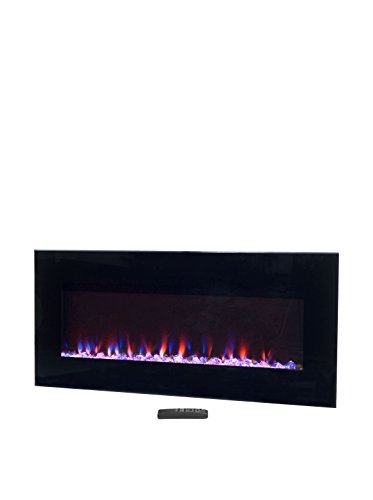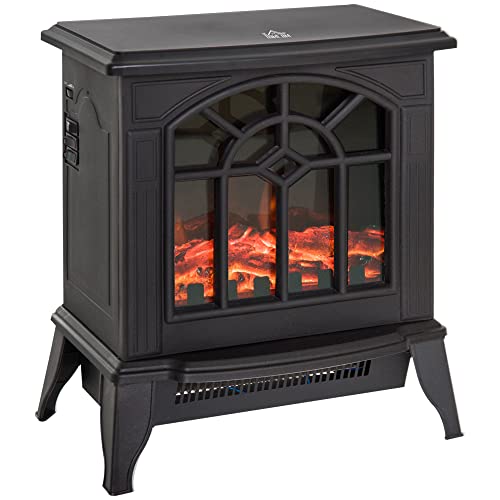
How to Get the Most From a Wood Burner
fireplace stove
Unlike traditional open fireplaces wood stoves are designed and optimised to burn firewood. This enables them to comply with stricter emission standards.
Wood burning stoves create dancing yellow flames and cosy crackling sounds. They also give a primal feeling of warmth. The smoke produced contains toxic air pollutants like formaldehyde and benzene as well as polycyclic aromatic hydrocarbons.
Efficient
Fireplaces and stoves made of wood are not only stunning, but they are also incredibly efficient. A top-quality wood stove can have an Ecodesign rating of up to 77 percent. With the increasing cost of energy, it is crucial to ensure that you get the most benefits from your log burner - the good thing is that this is much simpler than ever!
The amount of moisture in firewood is an important factor that determines how efficient a wood-burning stove is. We recommend using only dried and seasoned wood that has dried for at least one year and in many cases two years. The more dry the wood the more efficiently it burns which means less smoke and less harmful emissions.
Another great benefit of a wood burning stove is that it's a low carbon source of fuel, which is fantastic for the environment. When you purchase locally-sourced wood, you can also help to contribute to the active management and conservation of woodlands. This is beneficial for wildlife.
As far as maintenance is concerned, the primary requirement for a wood burner is to regularly scoop up and dispose of the ash. It can be a bit of a hassle but it's worth it to get the most heat from every log. If you allow the ashes 2-3 days to completely cool, they can also be used as a non-toxic, green melting ice. They can be used to polish jewelry or absorb smells.
A fireplace that burns wood is a timeless classic. Although they're not as popular than gas
wall fires, there is no denying the beauty and enthralling sound of a warm log fire. They're great for snuggling in the cold winter evenings and are a great way to create an inviting and warm space within your home. Make sure you invest in a high-quality wood stove and you'll start reaping the benefits for many years to come! Contact us today to find out more about how our skilled chimney sweeps can help you get the most out of your stove.
Low Carbon
Burners that burn clean and efficiently are among the best ways to save the cost of logs while keeping your home warm. As an added benefit they also aid in local woodland management, a great way of supporting the wildlife in your local area.
If properly maintained wood-burning stoves and fireplaces emit little or no pollution when they are operated with dry and seasoned wood. However, if they are not maintained well or made of poor quality wood the smoke that is produced by them is contaminated with fine particles (known as particulate pollution) which can cause irritation to the lung and other organs. It also contains carbon monoxide as well as toxic air pollutants like benzene, formaldehyde and polycyclic aromatic hydrocarbons. Inhaling air pollution can cause irritation to the lungs and trigger asthma attacks wheezing, coughing, and lung irritation. It could also cause cancer, heart disease or premature death.
Some people are worried that wood-burning stoves can contribute to climate change However, this isn't true. Burning wood produces energy that is carbon-neutral. The tree absorbs carbon dioxide throughout its life. When it is burned carbon dioxide is released into the atmosphere.
The wood is local, which decreases the amount pollution that is emitted in the transportation process. It is essential to select hardwoods that have been seasoned and of high quality. They will burn longer and more evenly than softwoods.
Modern wood stoves, including the ones made by Charlton & Jenrick, emit much less pollution than older stoves. They have been certified to meet 2020 EPA standards that are significantly more stringent than the earlier emission limits.
All wood burning stoves must be fully vented to the outside of your property to ensure that they don't cause a build-up of exhaust within your home. By keeping flames above the logs, and ensuring you use dry, seasoned wood and all our clean burn and DEFRA exempt stoves produce very clear exhaust and have particulate levels that are 60% or more below the DEFRA limit.
A wood burning stove equipped with a catalytic converter or a hybrid unit could provide the most efficient low-carbon heating solution. These units ignite gasses and particles that were ignited during the initial burning in a second stage by mixing them with superheated air. The remaining gases and particulates are pumped through a catalytic combustion unit for a final and third combustion. This reduces emissions to levels that are below the government standards.
Clean Burn
Cleanburn wood stoves burn fuel with the highest efficiency. This means that there are fewer dust emissions into the atmosphere when burning wood. The stove's air management system regulates the intake and exhausting of gases, ensuring that the combustion process takes place in a controlled, sealed atmosphere. It also regulates flame height to maximize heat output and minimise emissions.
This means that your chimney and surrounding area will be cleaner than older stoves. Particulate matter (also known as particle pollution) from incompletely combusted wood can cause respiratory problems like wheezing and coughing in people and can lead to the development of heart diseases as well as stroke, diabetes, and other serious health issues. The air pollution resulting from wood burning is also an important factor in poor urban air quality.
The smoke from poorly combusted wood is a mixture of fine particulate pollution and hazardous air pollutants, including carbon monoxide volatile organic compounds nitrogen oxides, benzene, formaldehyde and polycyclic aromatic hydrocarbons. These particles can reach deep into the lung and other organs which can cause discomfort, damage and even death. Airborne dust can also harm the surfaces in your home and create a gritty feel to rooms.
It's important to use only top quality, seasoned, and dried firewood for your wood burner
fireplace stove. The most efficient woods for heating are hardwoods, such as oak, ash and beech. Hardwoods have a higher density and BTU content, and they provide more heat than softwoods.
You should also determine if your local authority has rules regarding wood burning. These rules may include rules on odors and nuisances and visible smoke emissions or smoke opacity limitations.
It is important to keep the glass of a wood stove that has an open front that is free of grime and deposits. You can make use of a dry towel or oven cleaner spray to do this. You can also add bicarbonate soda and water to the glass.
Regular maintenance is also important for your stove and chimney. Regular chimney cleanings are required to get rid of creosote and ensure that the flue is operating correctly. Be sure to note dates for periodic inspections in your diary, as this will help you avoid costly repairs and extend the longevity of your wood burner.
Low Maintenance
Many people prefer installing wood burning fireplaces due to the natural warmth they generate. This kind of fireplace needs some maintenance and upkeep. If it is not maintained and cleaned regularly, the chimney, flue, and stove could be potential sources of fires within your home. fireplaces,
fireplaces-and-Stoves-uk10008.blogsidea.com, can also provide heat in the event of an electrical outage, especially during winter storms when branches of trees can fall and power lines may be ripped down.
When you use a wood stove to heat your home, you can reduce your carbon footprint compared to other fossil sources of energy like gas.